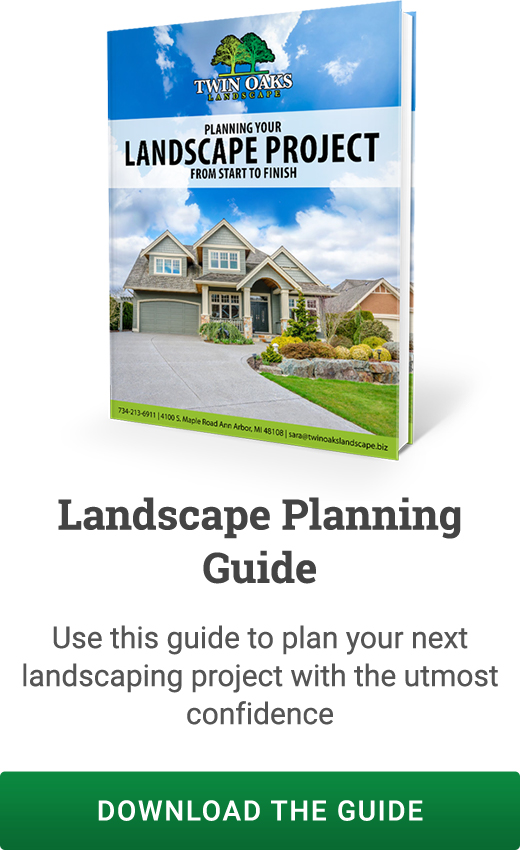April 15, 2024
Poor drainage is more than just a nuisance. Muddy shoes and a soggy lawn that is difficult to mow are often the least of the problems caused by inadequate drainage. If you notice standing pools of water or a very soggy lawn after it rains or snow melts, you likely have poor yard drainage that needs to be addressed before you experience more serious problems.

Poor Drainage Can Cause Trees, Grass, and Plants to Die
Poor drainage means you will be dealing with a soggy, muddy lawn after any precipitation. While many homeowners hate the look and mess of mud, it can cause more significant problems. Mud can smother plants by not allowing them to get the resources they need, and areas of your lawn and gardens with excessive mud will begin to die. When water doesn’t drain properly, the soil becomes oversaturated, damaging roots and making it difficult for plants to get the oxygen and nutrients out of the soil. Roots and grass can begin to rot, causing damage to trees and shrubs and resulting in dead patches in your lawn.
Standing Pools of Water Can Result in Bigger Problems
Large puddles on your property after a storm are not normal. If you notice pools of standing water on your lawn, you must act quickly. These standing pools indicate waterlogged soil, grass growth problems, and prime conditions for mold and mildew growth. Standing pools of water can cause insect infestations, as standing water is a perfect breeding ground for the larvae of mosquitoes, cockroaches, and termites. Rodents are also attracted to standing pools of water and can cause additional damage to your lawn and home. Finally, these stagnant pools of water can cause bacteria, fungi, and other microorganisms to grow, resulting in a foul odor that can be very off-putting to your family and guests.
Poor Drainage Results in Moss
Although moss is harmless, it usually grows where grass won’t. You should check your soil and drainage conditions to see if moss is rampant in your yard. Moss is far from a villain in your yard. Some people even use moss as an alternative to grass. However, moss on a lawn indicates that the environment is ideal for moss and not for growing healthy turf. Moss is an opportunistic plant that develops and grows in wet, bare soil areas or where turfgrasses are weak and thin. Moss is natural, but if you notice moss beginning to take over, it can mean that your drainage is poor. Moss thrives in damp environments and will take root in poor drainage areas, allowing muddy and potentially slippery conditions. If you want a lawn of safe, thick, healthy turf without mossy regions, you must address the drainage in your yard.
Erosion is a Significant Concern with Poor Drainage
When water cannot drain after a storm, erosion can be an issue. A sign of erosion is soil or mulch on walkways after a storm. This means that a runoff issue carries away the topsoil, leaving behind the compacted clay soil and exposed roots. This can cause bare patches and sinkholes in your lawn, but erosion can be far more damaging to your home.
Damage to concrete or asphalt, such as cracks, potholes, and broken pieces in a patio, driveway, or walkway, all indicate a drainage problem that will break down these areas over time, resulting in costly repairs. Soil erosion caused by poor drainage can also cause flooding in basements and crawl spaces and even damage the foundation, which will impact the structural integrity of your home. Foundation damage is serious and will need major repairs, so addressing drainage issues at the first sign of erosion is crucial.
How Can Drainage Be Improved?
Poor drainage in Ann Arbor area lawns is almost always caused by the heavy clay composition of the soil, which is often exacerbated by heavy construction equipment during the home-building process. While amending the soil is possible, it is a years-long process requiring constant vigilance and impractical for areas larger than a garden bed. Many reputable landscape service providers focus on drainage solutions that work with – not against – the soil. The first step is to ensure that the grading around your house is sloping away from the house to encourage runoff. If it doesn’t, regrading the property is the first step.
Once water is directed to flow away from the home, installing drainage solutions such as French drains can help direct water away from collecting in your yard. These drainage solutions are pipes buried underneath the ground to collect runoff and direct water away from the yard. Once the soggy areas and standing pools of water have been addressed with a drainage system, aerating your lawn once or twice a year can allow water, air, and fertilizer to reach the roots of your lawn and allow more water to be absorbed by the soil. A landscape maintenance professional can look at your soil and recommend a schedule for aeration.
Address Your Drainage Problems Now!
If you suspect drainage issues in your yard, you must act immediately. Ignoring drainage problems can have serious consequences. Working with a landscape maintenance professional with experience in drainage solutions can help you determine the proper steps to repair any damage and prevent further issues from developing. Drainage contractors who understand landscaping can determine if the grading is an issue, where to place drains, how often to aerate the lawn, and how to amend the soil in garden beds to allow for healthy growth. With the right landscape partner, you can address the drainage issues in your yard once and for all. Contact Twin Oaks Landscape today to learn more about how we can help.
Gallery
“We recommend Twin Oaks to any entity looking for a full-service, talented, and responsive provider.”
